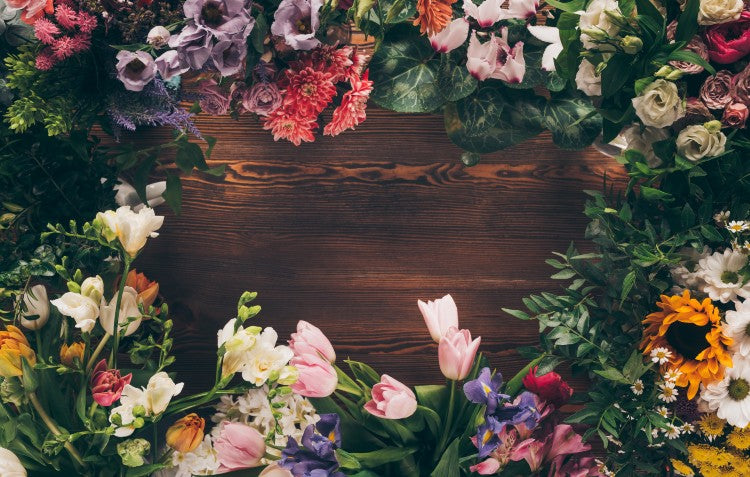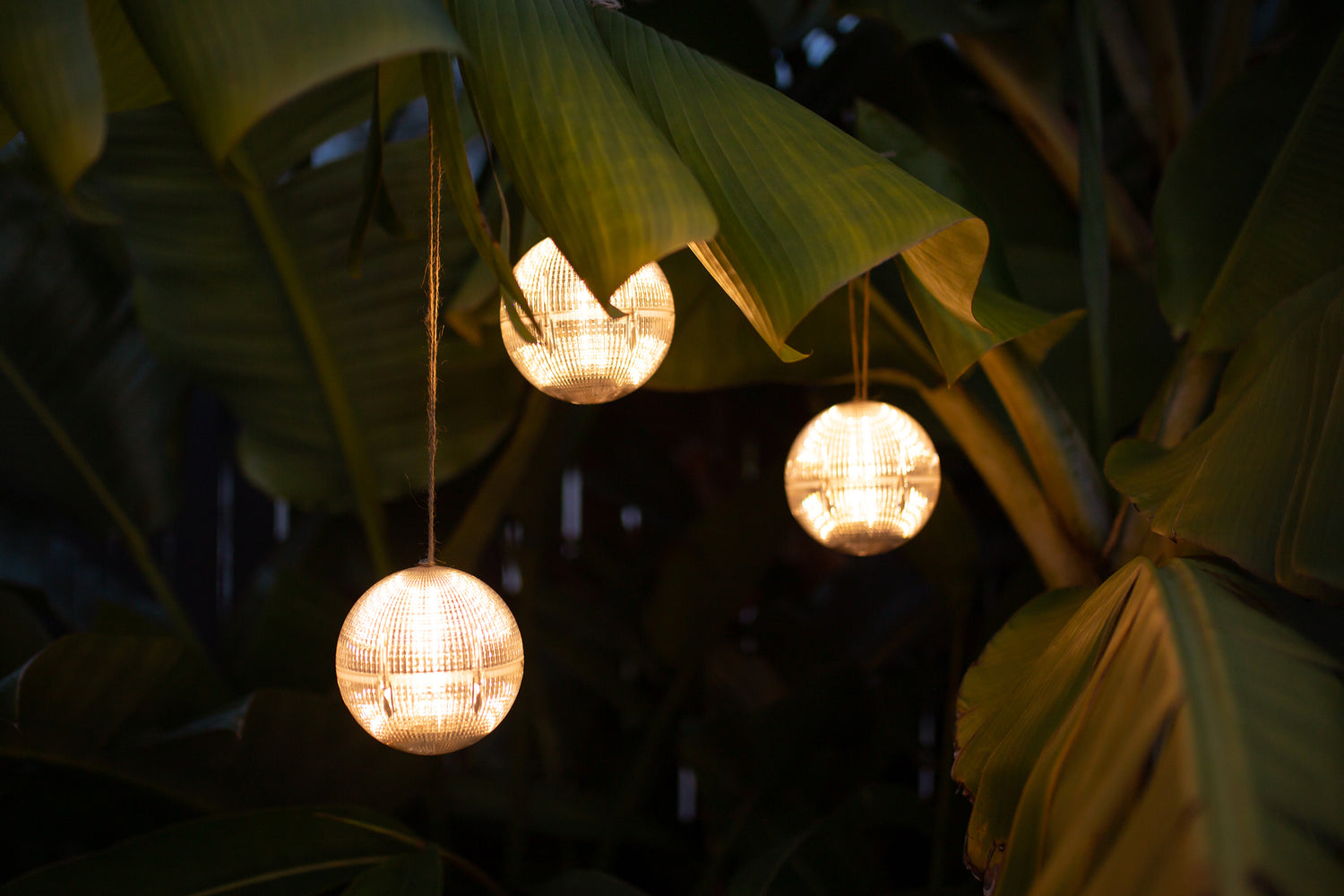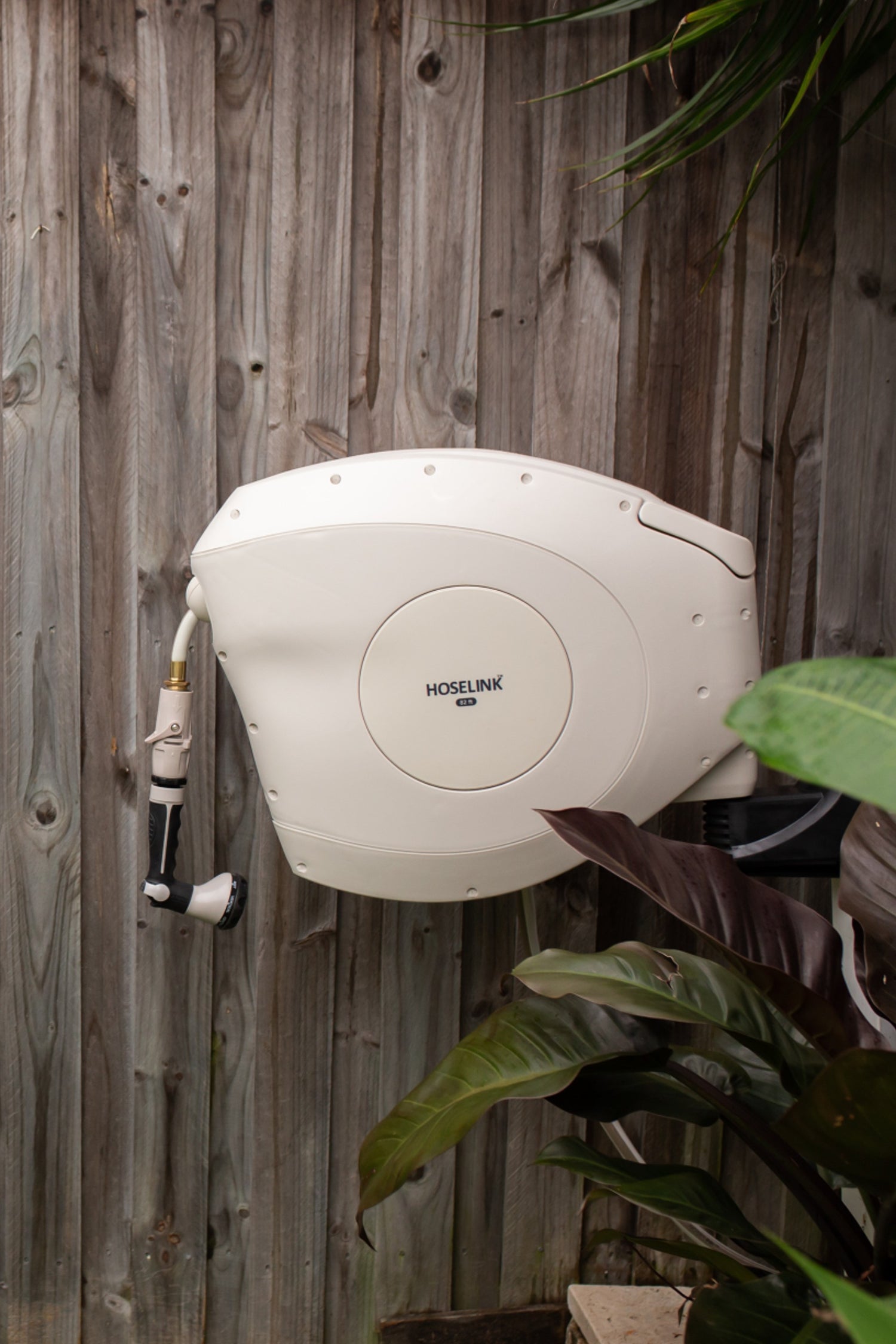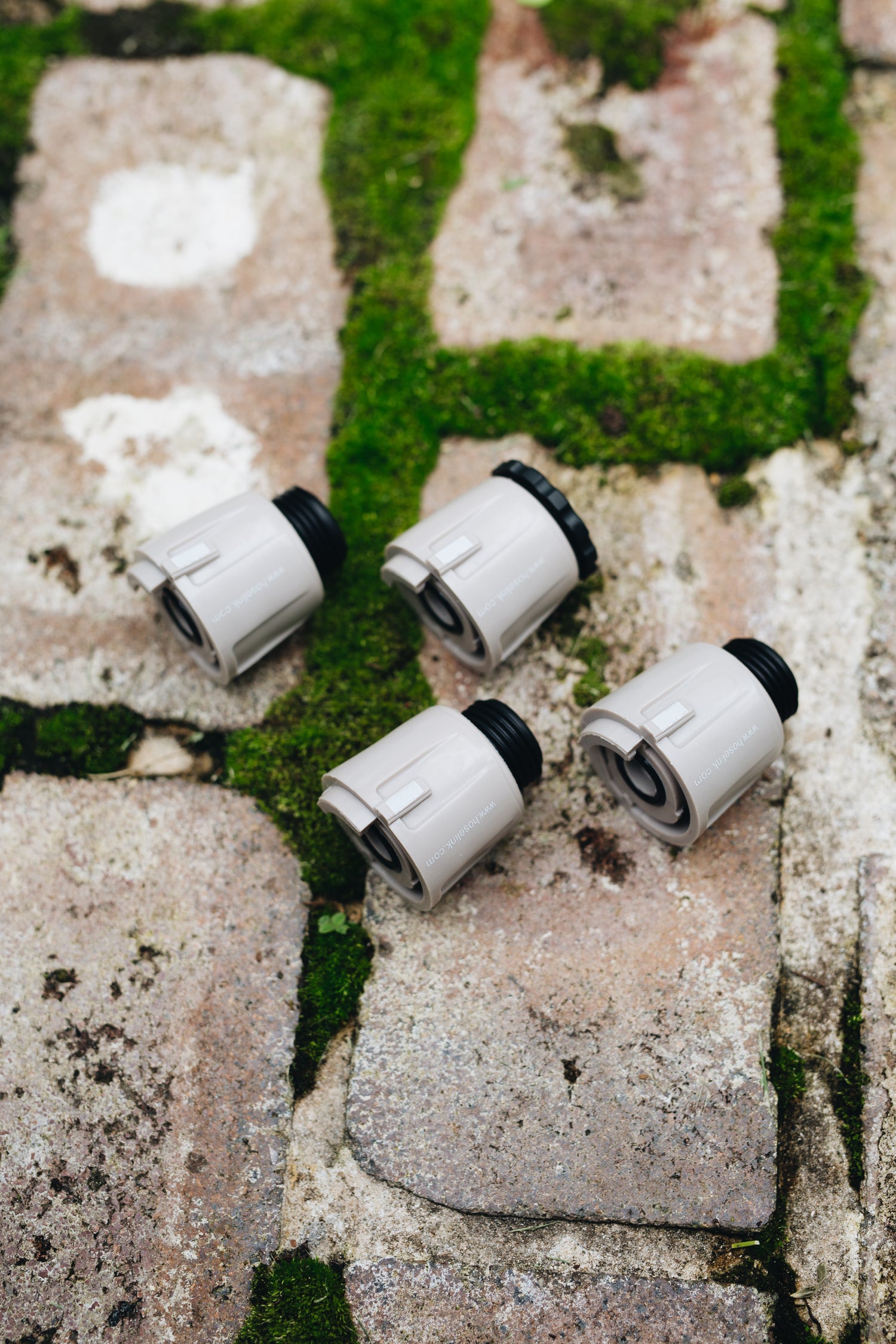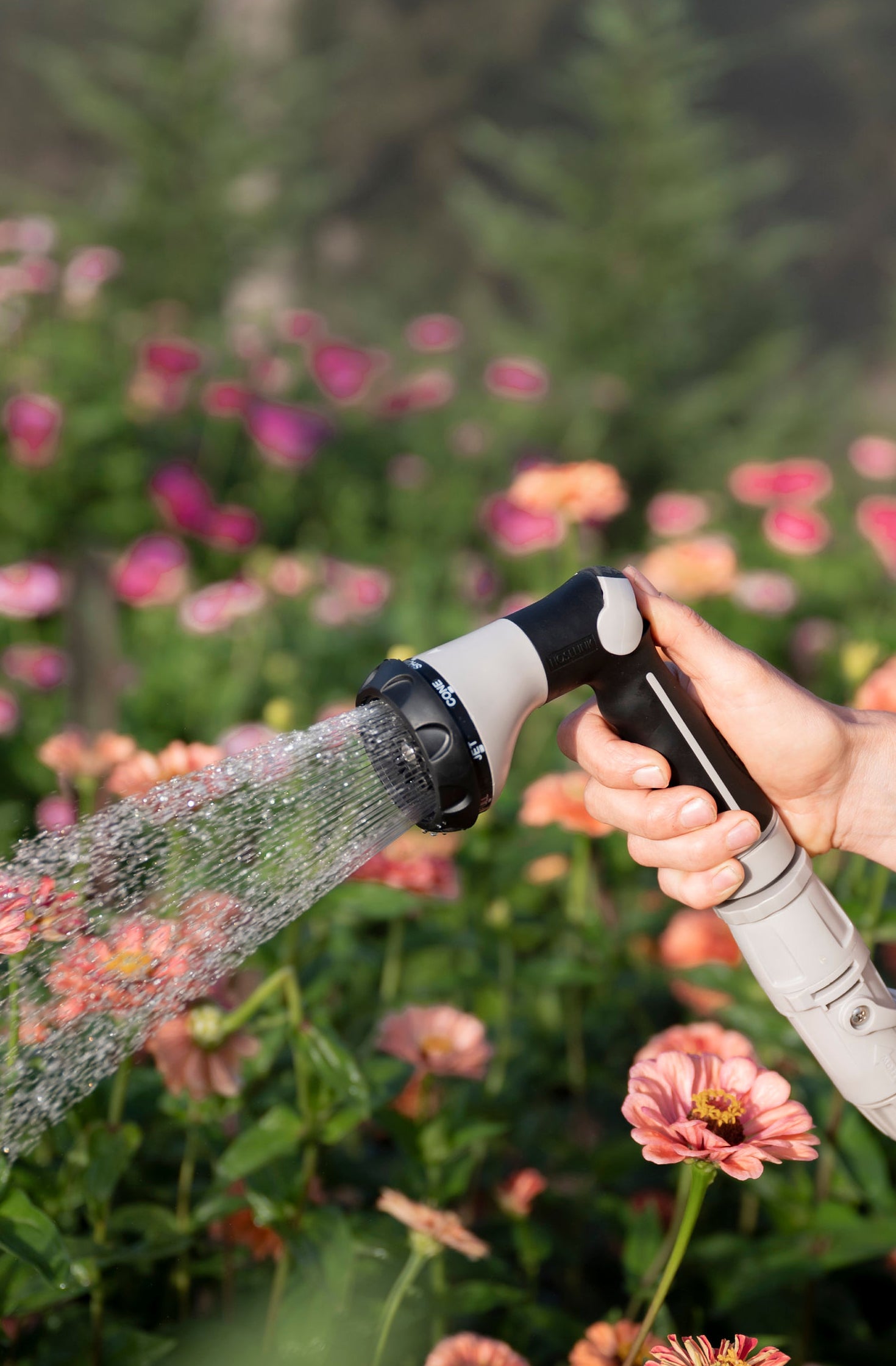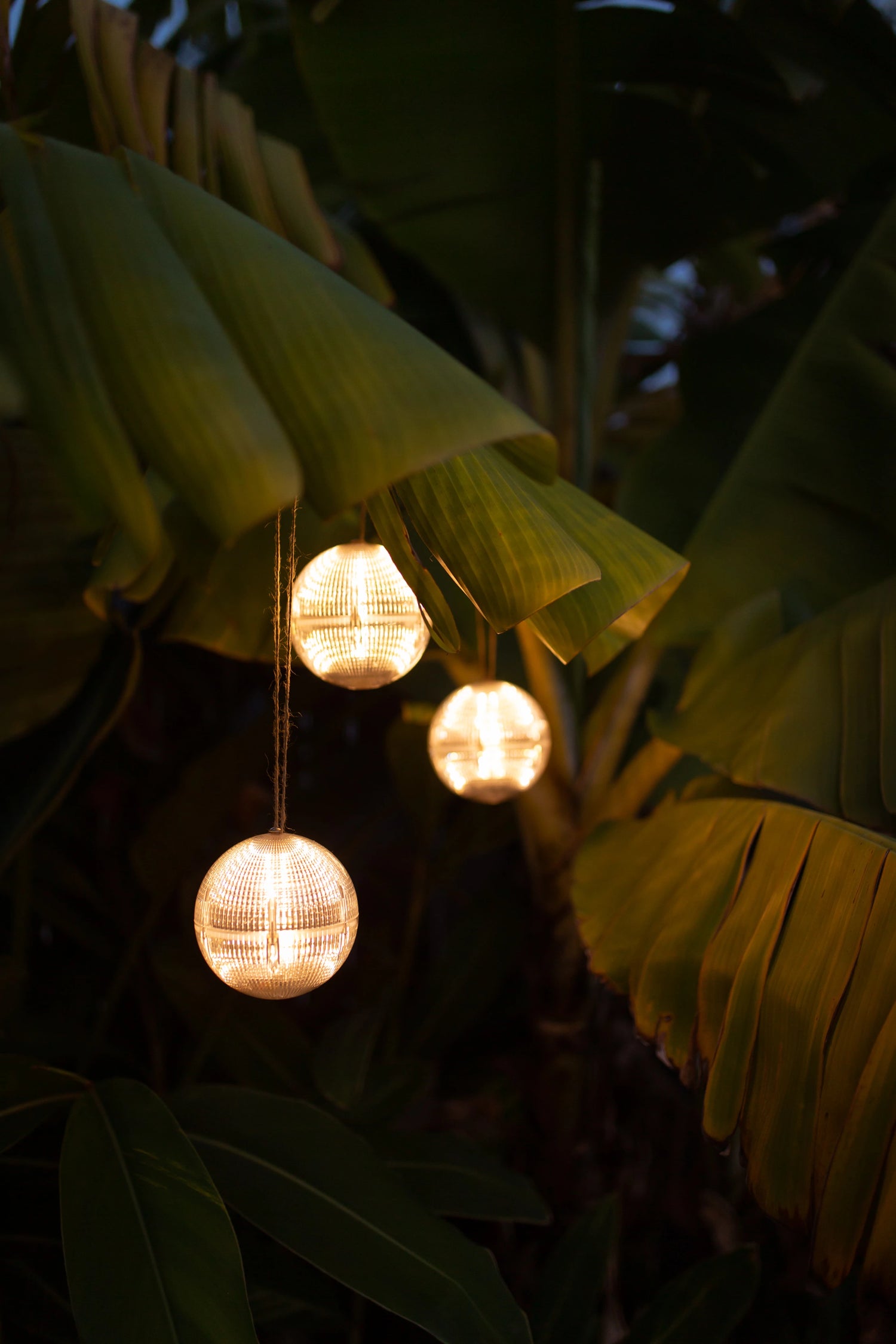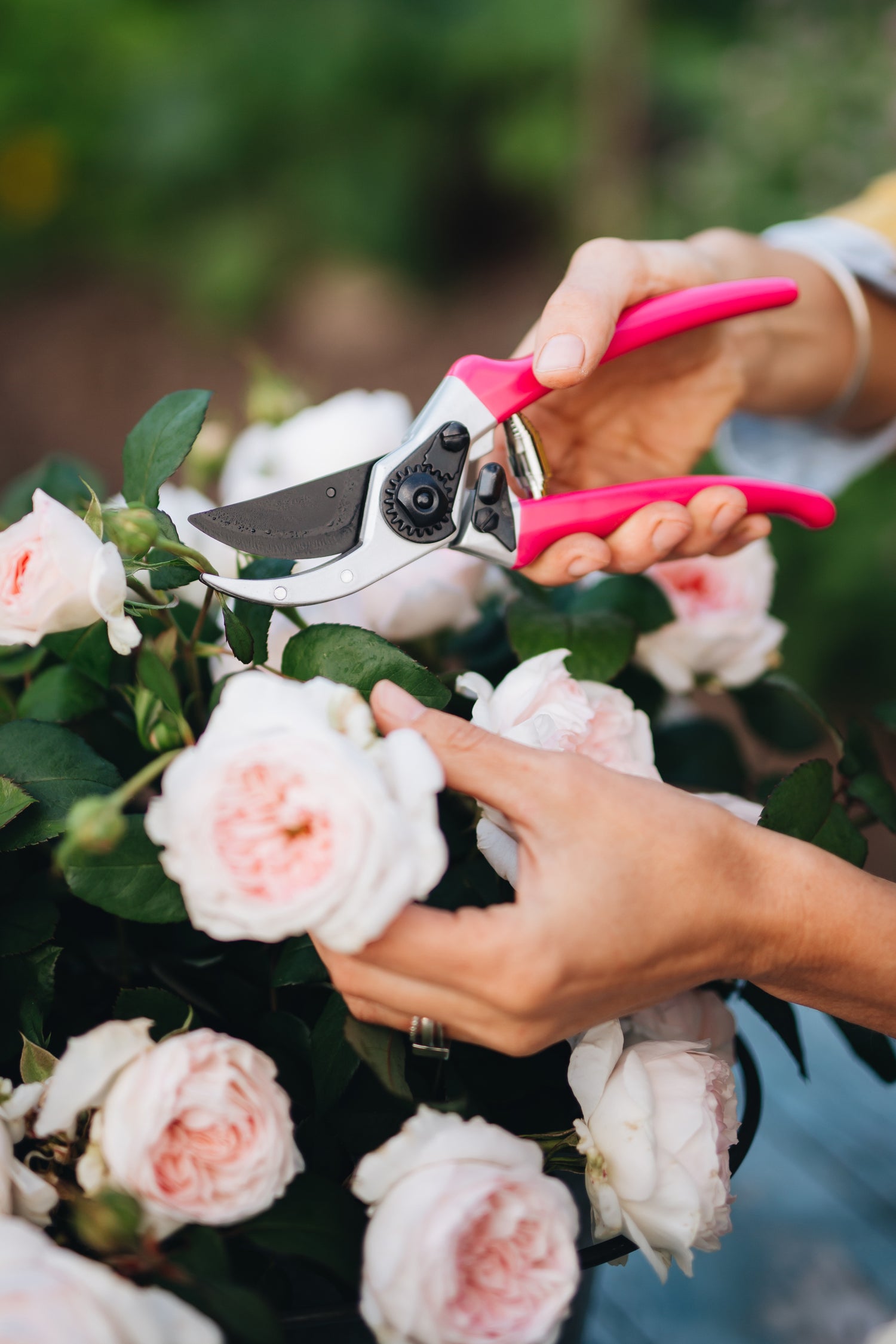Cut flowers are those grown purely with the intention of cutting to create a beautiful bouquet, wreath, or garland. If you’ve been dreaming of making your own eye-catching displays or simply want to add a pop of color to your garden, keep reading on for our top 10 flowers to grow for cutting and creating, plus some ideas on how to re-use and recycle leftover cuttings.
10 beautiful flowers to grow
Sweet peas
Renowned for their seductive fragrance, sweet peas grow in a range of gorgeous hues. The southern Italian native grows between 3-6ft when well supported. This climbing flower comes in many different colors, including white, blue, pink, and lavender. Sweet peas are ideally grown in zones 7 through 10, and be mindful they don't do well in humid or hot climates. After planting, sweet peas will take approximately 7-15 days to germinate. They have a long bloom period, from spring to fall. To encourage growth, cut them when they grow six inches tall, though refrain from cutting them too early as this will cause side shoot development, which is not ideal for your beautiful floral bouquets!

Peonies
Peonies are beautiful flowers that grow best in well-drained soil almost anywhere in the country. They can bloom for up to 100 years if they are well situated, requiring little to no attention. Aside from the many benefits of planting peonies, unfortunately,the stems cannot be recycled in your compost bin as they may encourage fungal diseases, which can appear in the soil. As peonies can grow quite tall and become heavy, it is essential to implement a structure for support to prevent your peonies from toppling over. It is also important to remember that while peonies can bloom for a long time, they may not bloom the first year after planting. It can sometimes take up to three years before you see an abundant display of blooms. Be patient; these cut flowers are definitely worth the wait!

Buttercup
You may know the buttercup cut flower as ranunculus. These petite yellow blooms are renowned for their unique petal texture and beautiful pops of color. Thriving in hardiness zones 8 through 10, these cut flowers require plenty of sunlight and bloom in spring. Plant your buttercup flowers early in time for a spring display as they usually take 3-6 months to bloom.

Carnation
Carnations come in three different varieties: large, mini, and dwarf. Depending on the look you’re going for, all varieties can contribute to an attractive outdoor display. Carnations vary in color from green to purple and even grey-blue. To keep your carnations from turning yellow, avoid over-watering them; keep the soil moist by watering once per week. Carnations are relatively low maintenance and only need a few hours of sun per day. Be sure to keep them clear from the frost or grow indoors with plenty of sunlight.

Delphinium
This purple lavender lookalike prefers to be in the sunshine and therefore grows best in warmer climates. Delphiniums bloom in summer and are not always purple in color; they can also be pink, blue, or white. Delphiniums attract bees, which is great for our natural ecosystem as pollination is essential, and makes a beautiful addition to any garden.

Gladiolus
Gladiolus is the flower that will make your indoor arrangement just a little bit more special as it grows in almost any color except for blue. They also grow with a range of different-sized petals. Most gladiolus species bloom in summer; however, if you live in a cooler climate, they can endure a bit of frost. You may be wondering where the unique name gladiolus comes from; well, it originates from the Greek word ‘xiphious’, meaning ‘sword’ due to its resemblance to the weapon. When creating a flower arrangement, it is important to note that gladiolus will only open up in warm water, not cold.

Lilies
Lilies are a well-known flower for their versatility in a flower arrangement, their stunning petal structure, fragrance, and color. Lilies typically bloom in late summer. It is recommended you plant lilies in spring for maximum impact. Don’t forget to trim the pollen coated anthers as if they fall off, you risk staining clothing, carpet, or even hard surfaces permanently. Cut the stems as short as possible to keep the flower growing and sit your lilies in lukewarm water, which should be changed every few days.

Baby’s Breath
This cut flower is the perfect complement to an existing flower arrangement that may need something extra. Blooming in a beautiful shade of white, this dainty flower germinates from seed in 10-15 days. Be gentle with these tiny flowers as they can break easily. Avoid misting the flowers to prevent them from rotting or becoming brown. Baby’s breath looks great as a fresh or dried flower.

Dianthus
Dianthus flowers are also known as ‘pinks’, a vibrant cottage garden flower. With their star-shaped petals and bold, spicy fragrance, these classic cut flowers have become a favorite among florists. Dianthus flowers come in various shapes and sizes meaning they can be used as a dainty addition to your flower bouquet or as the star of the show. To keep them flowering, make sure you remove any dead petals. Dianthus, especially the taller species, will require some support if they are in full sun. Other species will thrive in full to part sun and require little watering as they are drought resistant.

Marigold
Part of the sunflower family, marigolds boast a vibrant yellow and orange bloom perfect for cutting. This flower is known to require significantly less deadheading than other species, making them an easy, low maintenance flower for your garden. As marigolds germinate very quickly and are easy to plant, they are great for getting the kids into the garden. They are also a great source of nectar for local butterflies. Marigolds are a natural insect repellent, and by planting them near your potatoes, tomatoes, or eggplants, you will prevent pests as these are considered great companion plants.

Top tips for making your cut flowers last:
There are many benefits to using cuttings in your garden, the most obvious being that you can grow more plants, but it is also far more efficient than starting from seed. Be sure only to take cuttings from your plants when they are actively growing. For example, peonies bloom in late spring through to early summer for a very short amount of time. To keep your peonies growing, you should only cut them during this growing period. Once your flowers are coming to the end of their life, consider drying them out and creating something beautiful. Simply tuck them in the pages of a book, and in a few short weeks, you will have some beautiful pressed flowers. Another way your old flowers can be used is for eco-dyeing, which involves using the color from the petals to create a natural dye for fabric. Finally, if your plants are edible, use them in your food, cocktails, or even freeze in ice cubes for a colorful garnish!


